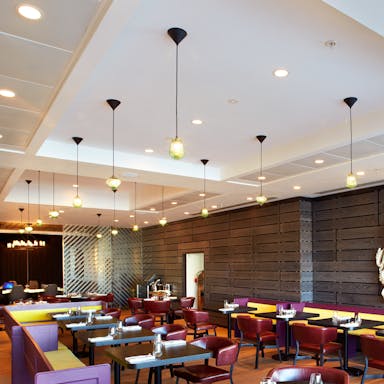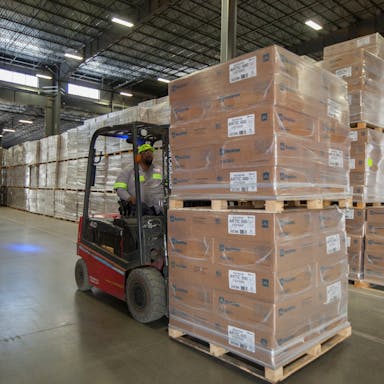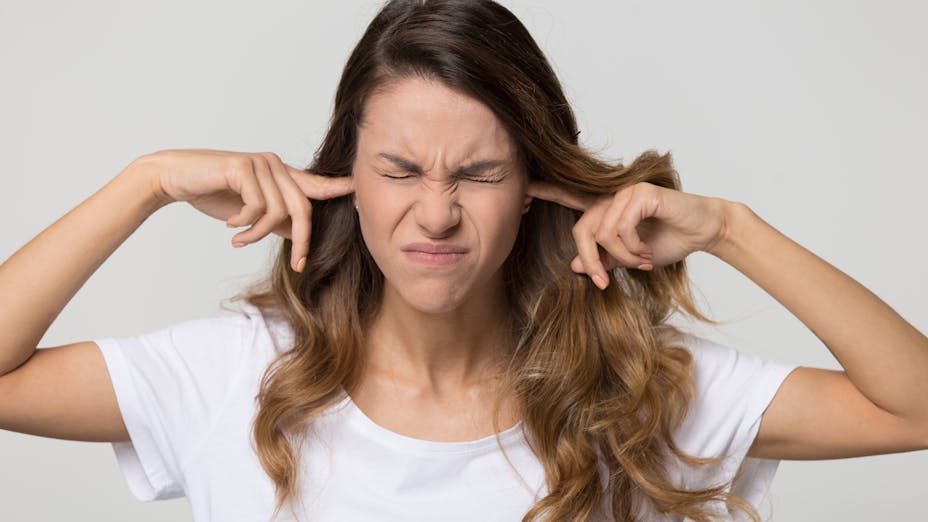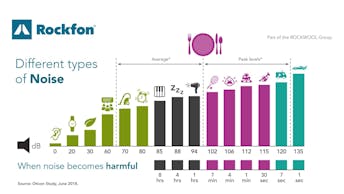We’re not the only ones affected by noise
Noise pollution affects both humans and animals alike. To give an example, birds in cities, especially those near airports and highways, must sing at a higher amplitude and higher frequencies to alleviate interference from noise pollution. This is also found underwater as well. Noise from boat engines has shown to disturb spawning, push schools of fish to deeper waters or even delay migratory journeys.[4]
Noise pollution is everywhere - and even in the quietest place on Earth you will hear a lot of noise.
The quietest place on Earth
To stop noise pollution and find real silence, we have to travel to the Microsoft Headquarters in Redmond Washington, USA. Here we find, according to the Guinness Book of World Records, the quietest place on the planet.
The anechoic chamber, which means that it is devoid of sound and electromagnetic waves, was designed using giant mineral wool foam wedge to completely absorb noise and to stop soundwaves as high as 120 dB(A) from entering the chamber.
Built for Microsoft to test the sensitivity of audio devices, it cost them 1,5 million dollars to build the 40m2 room. Inside the chamber the level of sound is -20.35 dB(A), which approaches the absolute “zero” level of sound.
But how would it feel to be in a room like this? The anechoic chamber would create a deafening silence, so much so, that very faint sounds would become audible. You would begin to hear your own heartbeat, your breathing and even the blood coursing through your veins. This can become very disturbing. In fact, it can be so disorienting that people that have spent extended amounts of time in the chamber become dizzy and nauseous. The longest time anyone has endured this extreme quiet was for 45 minutes.
Getting the right level of sound isn’t just about removing noise altogether, it’s about noise control and getting the right balance.
Noise pollution is getting attention
The influence of noise is something that governments are waking up to. We are seeing politicians and agencies lobbying for standards when it comes to indoor noise pollution as well as outdoor noise pollution. For example, in France, Spain, Germany, United Kingdom, Poland, and the Scandinavian countries, we see that there are specific acoustic regulations in hospitals to create an environment that offers stillness and better supports recovery. This trend can also be found in schools and other indoor spaces.
The European Environmental Agency has also begun to collect information about noise pollution levels around different European countries. The findings show that Estonia has the lowest levels of noise pollution, with the total population being exposed to the equivalent of 55 dB(A) during the day. Following Estonia is Lithuania and the Netherlands.
Make your world sound better
While it’s not possible to remove all levels of noise pollution that we experience, we can make a difference in many areas of our lives. The use of acoustic solutions for indoor spaces is a great way to regulate reverberation and reduce many of the negative side-effects commonly associated with exposure to noise pollution.
By managing noise problems, we can have safer noise levels at work, improve learning in schools, recovery in hospitals and reduce other side-effects of unwanted sound.
References:
[1] EEA Report, No 22/2019 “Environmental noise in Europe -2020”, ISBN 978-92-9480-209-5
[2] https://www.youtube.com/watch?v=B7XOx4j_rf0
[3] E. Ryherd, S. Okcu, C. Zimring, J. Ackerman, and K. Persson Waye, “ Noise pollution in hospitals: Impacts on staff,” J. Clin. Out. Mgmt. 19(11), 491–500 (2012).
[4] Slabbekoorn H “Noise pollution” Current Biology 29, R942–R995, Published by Elsevier Ltd October 7, 2019
[5] https://www.guinnessworldrecords.com/news/2015/10/microsoft-lab-sets-new-record-for-the-worlds-quietest-place-399444?fb_comment_id=1143826665645803_1143921322303004




